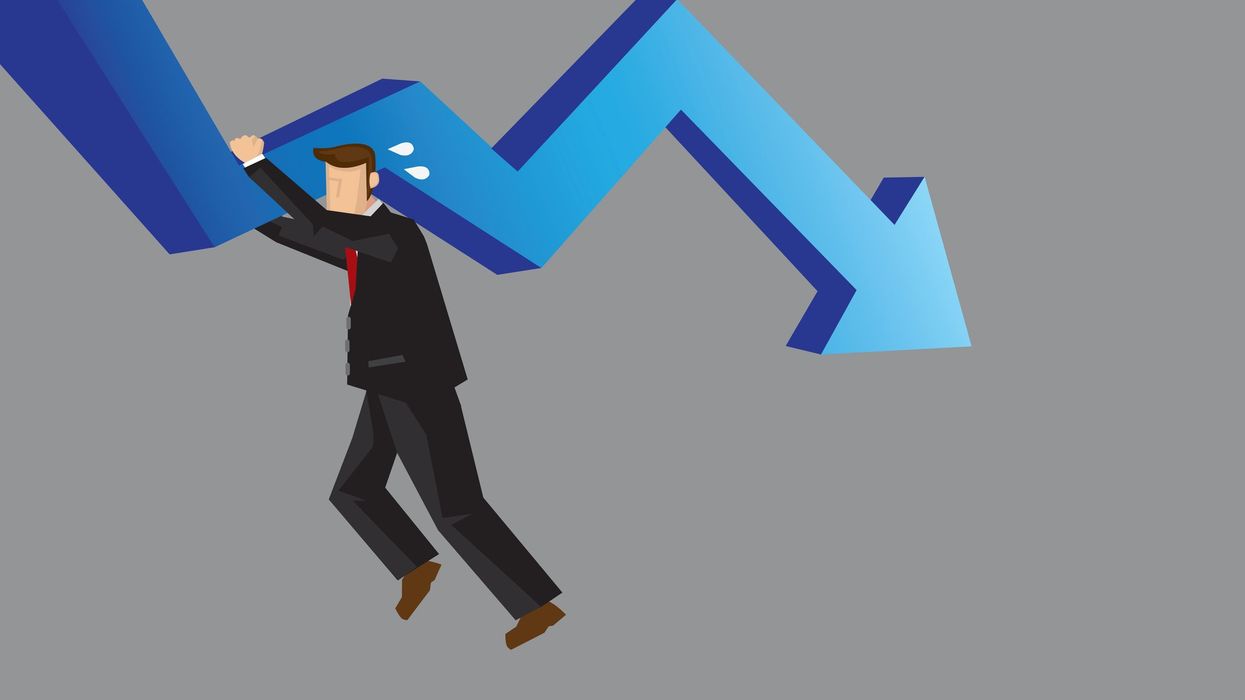
hofred/Getty Images
Imagine what the GDP would show if the government hadn’t been running massive deficits over the past several years.
If you’ve listened to Joe Biden or any of his mouthpieces lately, you would hear all about how great the economy is. Naturally, Biden gets all the credit for “the best economy in the world.” Of course, if you live the life of a regular American, your experience has likely been much different.
Inflation has been eating into your purchasing power, potentially coupled with any subset of dwindling personal savings, higher household debt loads, or not being able to buy a home.
Massive deficit spending is generating diminishing returns.
While previous data on the surface looked better than it was, recent data is beginning to show signs of that reality.
The first read of the first-quarter gross domestic product came in Thursday almost a full percentage point below widely held expectations. The 1.6% annualized growth rate was middle-of-the-road growth at face value. However, in addition to coming in far below expectations, there are additional concerns that make that number even worse than it might seem at first glance.
First, you might expect that if the economy is slowing, inflation would be too. That is not what is happening. The price component of the GDP report showed that consumer prices had increased — a bad outcome in general, but worse in the face of a slowing economy.
This was reiterated on Friday with the Federal Reserve’s favored inflation gauge, the personal consumption expenditure price index, coming in above expectations.
The personal saving rate ticked down again as well.
When the economy is experiencing slower growth and rising inflation, you end up with the dreaded economic scenario of stagflation, an outcome that many of us have been warning was quite possible for some time.
JPMorgan Chase CEO Jamie Dimon shared concerns recently about the economy turning into one that resembled the 1970s. Stagflation was a part of that era’s economic challenges — and Dimon’s worries.
In addition to accelerating inflation is another vital issue: Recent and current growth has come at a massive cost, one that is ultimately borne by taxpayers. The government has been running enormous deficits, both in dollars and as a percentage of GDP.
In fact, the deficit-to-GDP is running about double the historic average. It is highly unusual to run that type of deficit in a period of economic growth — normally growth shrinks the federal deficit. But the government has been trying to window-dress a story of growth using these massive deficits, and that deficit spending is generating diminishing returns.
Moreover, that economic window dressing has been done at a very high cost, given that interest rates are at a level that hasn’t been seen in a decade and a half. This ensures that we as a country will be paying more and more for the appearance of a growing economy.
Imagine what the GDP would show if the government hadn’t been running these massive deficits over the past several years?
So other than debt closing in on $35 trillion, double the average debt-to-GDP, debt rating downgrades, accelerating inflation, a lower-than-average personal saving rate, record household debt, increasing debt defaults, and now a faltering GDP, the economy is doing just great. Thanks, Joe!
Carol Roth
Contributor